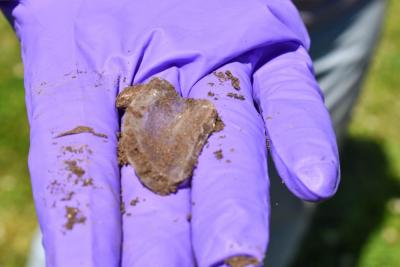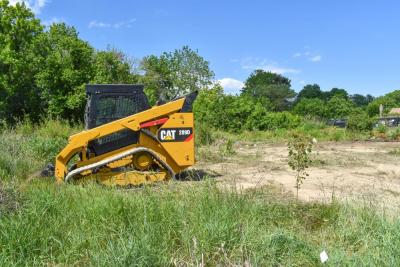Bliss Corner cleanup begins
The cleanup of toxic soil from five homes in Dartmouth’s Bliss Corner neighborhood is officially underway.
U.S. Environmental Protection Agency crews began on-site operation in the neighborhood on Monday and plan to complete clean-up work by the late summer or early fall.
They’ll be working in the neighborhood from 7 a.m. to 5 p.m. Monday through Thursday. According to EPA public coordinator Kelsey Dumville, work will be done one home at a time.
The clean-up is the result of years of investigation. Back in 2018, the state began looking into reports of historic dumping in the neighborhood dating back to the 1950s.
After confirming that the soil was contaminated with dangerously high levels of lead and polychlorinated biphenyls — also known as PCBs — the agency approved a plan to remove the contaminated soil from the five properties.
Each of the homes are currently occupied. The EPA refuses to identify the parcels due to privacy concerns, but the property owners have been notified of their scheduled cleanups.
Cleanup was initially scheduled to commence this past November, but was postponed due to a fairly rainy fall and administrative issues with setting up a staging area.
According to the EPA, the agency will primarily work out of two sites: a command post located at the old police station at 249 Russells Mills Road and a staging area at a privately-owned property on McCabe street.
The agency did not specify an address for the McCabe street property.
Only clean materials such as fill, gravel and topsoil will be staged at the command post. It will also house office trailers, store supplies and equipment.
Contaminated soil removed from the five residential properties will be stored at the privately owned lot on McCabe street.
During the cleanup, agents will excavate contaminated soil to a maximum depth of three feet below ground level or until the state’s standard for lead (200 parts per million) or total PCB (1 parts per million) is achieved.
After the contaminated soil is transported to a staging area, the lots will be filled with clean dirt and topsoil. Any trucks transporting the soil will be decontaminated to prevent any potential spread of the hazardous materials and will go to a designated landfill.
The EPA is still finalizing a disposal site.
Agents will also conduct air monitoring and use engineering controls such as liners and covers to control dust and prevent migration of contaminated soil from the staging area.
The agency added that throughout the cleanup, workers and contractors may be wearing protective clothing due to their direct contact with contaminated soil.















